|
TennisOne Lessons
Using The Alexander Technique To Generate Powerby Gary Adelman The initial article of this series introduced the concepts that the great strokes of the game incorporate the principles of the Alexander Technique and that integrating those principles into your own game can greatly elevate your level of play. The second article detailed how the principles can improve your movement. This article will cover the use of the principles of the Alexander Technique to generate power.
As described in the first two articles, the heart of the Technique is learning to consciously control the use of the body. After intensive study, F.M. Alexander discovered a little known secret of coordinated movement that controls how we use ourselves in all our activities. Simply put, this control is based upon a the head, back and neck in relation to the rest of the body. To properly and naturally use our bodies, whether in striking a tennis ball or any other movement, 1) our heads must initiate the movement forward and up and 2) our torso and the rest of our body must then follow the lead of the head by lengthening (as opposed to contracting). The proper use of the neck is what allows that leading of the head and consequent lengthening to occur. A "free" neck allows the head to release delicately forward and up off the top of the spine. However, if the neck muscles are not free, but, rather stiff and over-contracted, the head can not release from the neck and initiate a lengthening response. Alexander called the proper use of the head, neck and torso the "Primary Control" since controlling the head, neck and torso enables you to control the entire body. The Key to Power: Spiral MovementSpiral movement is the secret to accessing enormous untapped power in your strokes. More specifically, two spiral movements, one done in the preparation phase of the stroke and the other done in the forward swing of the stroke, are the key. Spiral movement is defined as a three-dimensional curve in space around a central axis. A spiral elongates as it turns so it has a built-in expansive quality to it. Spiral movement is a type of movement we naturally and frequently perform throughout the day.
For example, when our hand reaches for a door handle or to shake another's hand we naturally make a spiral movement with our body and the entire torso rotates around our spine. Another example is the spiral movement of our body when we roll over on the floor or in bed. Walking and running are dominated by spiral movements. Not only do you see this spiral movement in our actions, but also in the body itself. Most of our bones are curved and many of our muscles spiral around our body. Preparation Phase: The First Spiral MovementAs soon as a player perceives his opponent's shot is coming to his forehand, he will begin to spiral to his right as he moves to the ball. As he gets closer to the ball and goes into the preparation phase of the stroke, the spiral will become even more pronounced. There are four critical items to spiraling correctly in the preparation phase.
You should feel the spiral not only in your upper body but all the way down to your feet. Even the arms will be involved in the spiral. All big pro forehands take advantage of the power source of spiraling the entire body. Also, since the body is three-dimensional, your spiral motion will be three-dimensional. As the player spirals to his right in the preparation phase, 1) the front, 2) the sides, and 3) the back of the body all spiral to the right. In Alexander Technique, we use the phrase "release" and avoid saying to "relax." When players are told to relax, they instantly collapse and try to go limp, losing the necessary tone in their muscles. Relaxing is something that you try to make happen; releasing is something that you can only allow to happen. Here is a helpful exercise to better understand this point. Start making a fist, gradually contracting your hand muscles more and more to make the fist clinch tighter and tighter. When you have it as tight and clinched as you can, simply let the muscles unclench a bit by stopping your clinching. Note how your hand muscles release, lengthen and open merely by stopping the clenching. It is not important that the hand muscles become totally lengthened. What is important is that the muscles are releasing away from a state of contraction and towards a lengthening state. In the Alexander Technique, we say "it is the quality not the quantity" - as long as you are moving in the right direction that is all that matters. Indeed, you never reach the ultimate state. You just get better and better at it with practice. It is the same with your tennis strokes. As you spiral, allow yourself to "undo," to move in the direction of lengthening and away from contraction and shortening.
Forward Phase: The Second Spiral MovementThe first spiral (i.e., the spiral in the preparation phase) ends when the stretch you feel in your entire body from that spiral reaching its optimal length. It is as if you have stretched the rubber band as far as it can go and there is now tremendous potential power in your stroke. At this point you can either 1) take a step forward with your front foot (left foot in the case of a right-handed forehand) and put yourself in a square stance or 2) leave the foot where it is and use an open-stance. In either case, the remaining part of the stroke consists of the second (forward) spiral. In this second spiral, we "release" the stretch of the first spiral as we curve and spiral back towards the net. The first spiral "sets up" and is responsible for the second spiral. All we need to do is get out of the way and let the second spiral happen. The muscles should lengthen (not contract) while the head remains still and poised giving us the stability we need while allowing our racquet to accelerate effortlessly into the ball. The spiraling energy generated inside our body extends out into our racquet head and is converted into kinetic energy as the racquet strikes the ball. (The ball will spiral also, as it usually has some kind of spin.) Unfortunately, many players are not aware of how to create energy through the spiral motion. Instead, they try to hit harder by trying to swing their racquet and arm faster. This a) throws their timing off, and b) causes certain parts of their body to rush ahead of others. This results in coordination problems and leads to the player actually generating less racquet head speed, not more.Another common error is for players to attempt to use specific body parts to help the process. They might overuse their shoulders by attempting to throw their upper bodies and shoulders into the shot. This puts the player off balance. Others focus on pushing into the ground with their legs and overuse and stiffen with their legs -- to their dismay, their leg muscles may become larger from the exercise but they will not add much zip to their shots. Bracing and stiffening of the rib cage is another common flaw. This flaw both 1) interferes with the ability to spiral and 2) causes us to hold our breath leading to fatigue and causing the player to constantly be out of breath.
For example, I recently gave a lesson to a former college player who currently plays at a 5.0 level. He had well-founded strokes and some spiral to his groundstrokes. But his elbow was tightening so much on the swing that not much energy was being transmitted to the ball. After this was pointed out to him, he started to release through his elbow and his shots had more sting. For another player, the trouble spot could be another body part. Remember this critical piece of advise, "to hit harder, do less, not more." Although this advice goes against all of our instincts, it reminds us to gain power through letting it happen rather than trying to make the power yourself. The power is already there if we know how to store it and direct it through the spiral. We need not manufacture it. We simply spiral around and allow the power to flow from the ground through us. Your comments are welcome. Let us know what you think about Gary Adelman's article by emailing us here at TennisONE. Gary has taught the Alexander Technique at Harvard University and Babson College and as assistant varsity women's tennis coach at Princeton University. Gary can be reached by email at GaryAdelman@verizon.net and by phone at (413) 442-5905. |

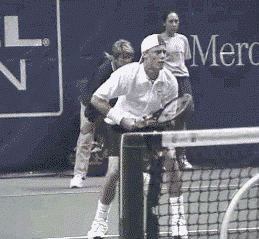
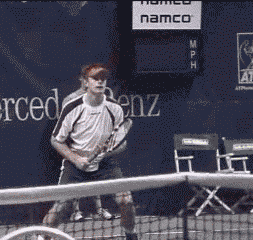
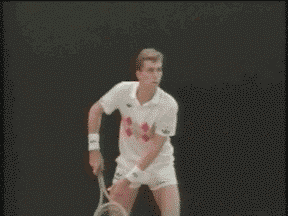
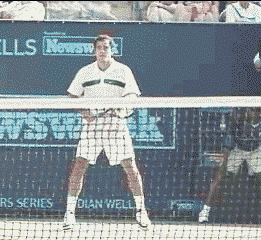
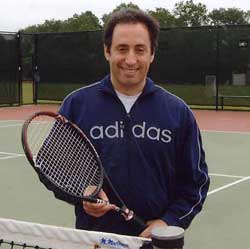 Gary Adelman, a former top player at Columbia University, has been teaching tennis for 25 years and the Alexander Technique for 10 years. Gary is a certified Alexander Technique teacher, having completed a 3-year teacher training program for the Alexander Technique in Cambridge, MA. He has worked with national and world-ranked players with this technique at the Israeli Tennis Center in Ramat Hasharon, Israel, including Anna Pistolesi.
Gary Adelman, a former top player at Columbia University, has been teaching tennis for 25 years and the Alexander Technique for 10 years. Gary is a certified Alexander Technique teacher, having completed a 3-year teacher training program for the Alexander Technique in Cambridge, MA. He has worked with national and world-ranked players with this technique at the Israeli Tennis Center in Ramat Hasharon, Israel, including Anna Pistolesi.